Hi WNVM-ers,
Fawnia is away on a press trip, so I’m holding down the AC-cranked-all-the-way-up fort this week. Today I have a story I’ve been waiting to write for my entire career. I’ve mostly written for and about a younger customer, because that was (and still is, let’s be honest) who the beauty industry caters to. But we are in a moment now where brands want the over-40 crowd — well, well, well! I delve into the reasons why, the new emerging brands, and the limitations, all with some honest product reviews along the way.
Then, the joy of the #WeDoNotCare movement and, good lord, the new Pedro Pascal photo shoot.
We are taking next Thursday off for the July 4th holiday, but pay attention to your inbox next week anyway, because we have an announcement coming your way *wink*.
Per usual, you may need to read the entire newsletter in your browser. And, if you’re feeling generous because it might be easier to find makeup now, please give us a heart at the bottom of the post.
Put On a Little Makeup — Make Sure They Get Your Good Side
Can the beauty industry get this right?
By Cheryl

“Hydration that lasts longer than VHS tapes,” crowed the caption over a smiling woman with visible forehead wrinkles holding a bottle of serum in my Instagram Stories. “Luxury essentials formulated for BABES 40+,” announced a Sephora display. “Gen X leads in beauty spending,” proclaimed a headline.
What in the name of Drew Barrymore’s ‘90s eyebrows is happening here? Are we being … noticed?!
In 2016, I wrote that the beauty industry had a Gen X problem. It’s apparently trying to solve it now. It is offering new products and acknowledging us visually in a way it hasn’t previously — beyond a Kim Cattrall here and a Viola Davis there. The challenge is whether brands can nail the nuance required to speak to a generation that has concerns beyond just “old skin” and prides itself on sensing an inauthentic sell-out from a mile away.
Spending Power
This sudden interest in older customers is not altruism or a rejection of ageism. Brands see a new market to tap and money to be made.
In 2021, beauty shoppers over 45 became the highest-spending generation, according to a NielsenIQ/Spate/World Data Lab report. It’s estimated we will spend $430 billion on beauty products and services through 2034. (After that, the gigantic millennial cohort will take over buying where we leave off.) The search term “mature skin” is trending on Google and TikTok, with an increase of over 52% year-over-year, according to Spate. And almost 20% of our generation feels that existing brands don’t meet our needs.
The trend of developing brands for the over-40 crowd is likely helped by the monetization and discussion of menopause, which of course puts older women front and center in the conversation, as I wrote for Gloria a few years ago. But I frankly don’t want to think about my hormones or uterus when I’m considering a lovely face cream to buy. Please do not call your blush made for people over 50 “Haute Flash”!
Leaving People Out
The beauty industry values youth — after all, that’s its elusive promise, reflected in the imagery of dewy-faced ingenues. Older people have always been important customers, but our fine-lined, slack-pored faces were not part of the storytelling. Take Isabella Rosellini’s long tenure as a face of Lancôme: It was interrupted for 20 years after she was fired for being “too old” at 40. She was reinstated in her 60s.
The “industry standard … is that anyone over 28 doesn’t exist,” a beauty source recently told reporter Rachel Strugatz at Puck. Kirbie Johnson, writer and co-host of the Gloss Angeles podcast, wrote for Allure a few years ago that she felt “aged out of the makeup conversation” — and she was still in her 30s.
This feeling of being left out of beauty is not new for many consumers, though.
“I will tell you that as a 50-year-old Black woman, nobody ever talked to us. Like, we were never really talked to at all in the beauty space,” says Felicia Walker, a content creator who has worked in beauty for over 20 years and is currently a skin care educator and the author of Your Glow Guide. “So when you get to the point of being 40 or 50, you are conditioned to look at what's available and figuring out for yourself which products work for you.”
So can an industry that has historically ignored a big chunk of people get this right?
New Brands, Old Faces
“If you think of the Lancômes and the Estée Lauders of the world, they have all these franchises for so many different ages and skin types, and it's utterly overwhelming,” says Carlene Higgins, 49, a longtime beauty editor and the co-host of the Breaking Beauty podcast.
This August, Higgins is launching her first product in a skincare brand meant for older consumers, drawing on her extensive experience testing products. She’s joining a growing niche.
Sarah Creal Beauty’s namesake founder is a powerhouse product developer who has worked with Bobbi Brown Cosmetics and Tom Ford Beauty, and was the CEO of Victoria Beckham Beauty. This is the brand that billed itself for “BABES 40+.” The products are lovely and I really like the packaging, but some of its ham-fisted, girl boss messaging can be grating or even downright tone deaf. Anne-Marie Guarnieri at Starving for Beauty wrote about the “cognitive dissonance” in the brand’s recent lipstick campaign, which features shade names like “Invisible Labor” and “Red vs. Wade.”
Former Smashbox marketer Michele Gough-Baril launched skincare-makeup hybrid Iris & Romeo, known for its fantastic do-everything skin tint with SPF. Skyn Iceland founder Sarah Kugelman is trying to make lightning strike twice with newfangled eye patches and gray hair products at All Golden. And Elena Behrakis Frankel and Carolyn Q. Barber, two former beauty boutique owners who worked at cosmetics counters for years, launched makeup brand Flyte.70.
This month, 52-year-old model/actor/producer/podcaster Molly Sims’ skincare brand YSE Beauty (pronounced “wise”) hit Sephora after landing a private equity investment last year. She recently celebrated its two-year anniversary with a splashy brand trip to Cabo for Gen X influencers.
YSE’s tagline on Sephora’s shelves is “Skincare for women too busy for skincare,” which is code for “older” I think, because Iris & Romeo uses similar “simplification” language. (I mean, we are very busy.) A lot of the women on its Instagram look younger, but a brand rep told me that Gen X is definitely its focus and that 80% of its customers are over 40.
I probably wouldn’t have organically purchased YSE, but kudos to Sims and her formulators, because I loved most of the products I bought to test. The SPF glowy primer and rich moisturizer, which is a silky, elegant formula, are real standouts. (Skip the sparkly gel oil cleanser.)
Old-ish Brands, New Again
Then there are a few industry grande dames in the mix. UK-based former stylist Trinny Woodall did what Stacy London, her US counterpart in the “What Not to Wear” franchise, couldn’t do: launched a successful beauty brand for the over-40s. Trinny London has been around since 2017 and offers a full skin care and makeup range; you’re going to be hearing a lot more about it. A pop-up store in NYC has been open since the end of last year, and she is looking to expand here. Her cream eye shadows are the best I have ever tried, and I keep buying new shades.
And here’s a name you may recognize from the ‘90s: Laura Geller, who is often credited with popularizing baked makeup and the face primer category with the ingeniously named Spackle. Geller has improbably staged a comeback for her brand after breaking out on TikTok. She leans into her original Gen X and Boomer fans, and has hired Cyndi Lauper, Fran Drescher, and others for brand campaigns. (This might not be fair, and is not an indictment of the products, but the brand just doesn’t feel modern to me.)
But there are problems with this trend, mostly involving inclusion and price.
All For One, Not For All
“It’s hard, because chances are these [brands] are primarily speaking to white women,” says Walker, of whether we need this category generally.
Indeed, most of the founders above are white and all are visible faces of their brands. Their social media and websites do feature diverse models to a varying degree, but some, like Laura Geller Beauty in particular, could really stand to do better here.
Inclusiveness in shade ranges may be an issue too. Many of these brands offer light to medium coverage skin tints, under the assumption that we probably don’t want heavy foundation anymore. These products usually don’t need strict shade matching because they’re more sheer than regular foundation. But are six shades or even 12, with fewer options on the deep end of the spectrum, really enough? For comparison, Fenty offers 25 and Ilia has 30.
Walker notes that skin concerns commonly attributed to older skin, like dryness, aren’t necessarily the same among all people of all ethnicities over 40. When she helps people find skin care, she drills down to their individual needs. For example, she personally has oily skin.
“So when you think about all of the dissecting and specialization that needs to happen, can a 40-plus brand really cover everything?” she asks.
Prohibitive Price
Across the board, the brands breaking out for this age range are pretty expensive. “There seems to be an age tax on our demographic,” says Higgins.
Sarah Creal Beauty is making a name for itself with its concealer, which costs $58. Six pairs of eye patches from All Golden, which extend from under the eye to the lids, cost $55. I should note that they made my eyelids pink and were hard to get off.
Drugstore brands like L’Oréal, Olay, and Roc do make a lot of products that are targeted for older skin, but they can be uninspiring. Less expensive “masstige” brands, like Byoma, are innovative but completely ignore anyone over 30.
Show, Don’t Tell
Technically, makeup should be an ageless product. Anyone can and should wear lipstick if they want to! But formulas and, frankly, perception, matter.
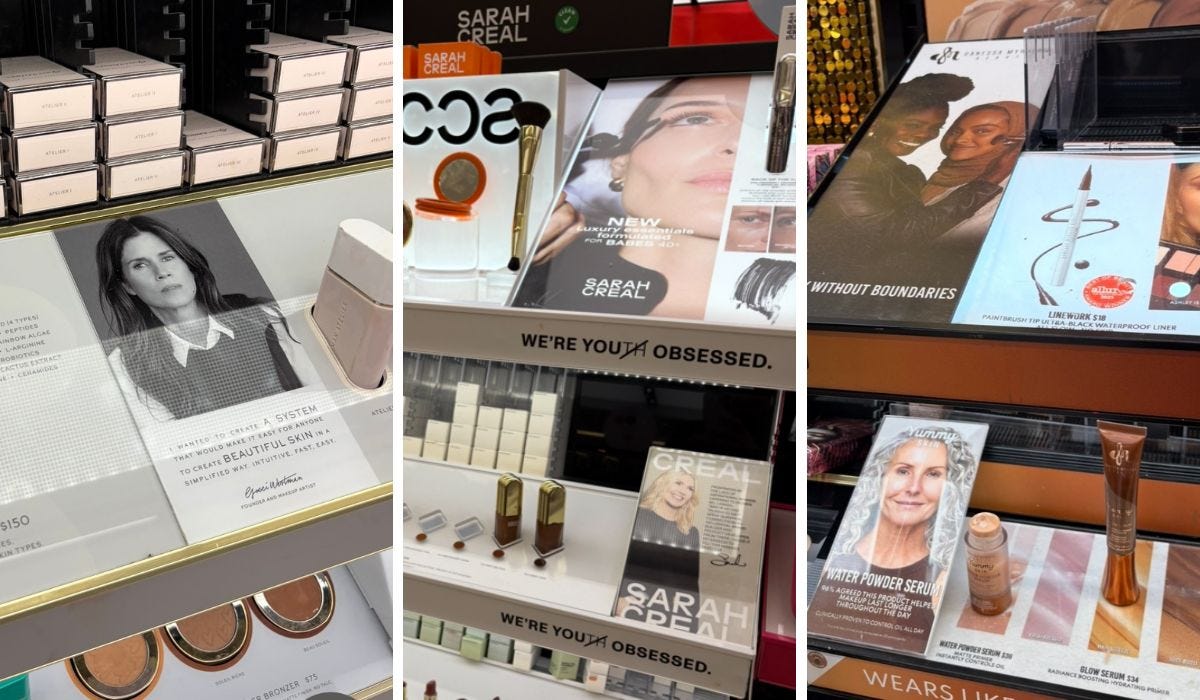
Several makeup artist-founded brands do have the (haha) X factor and have emerged as favorites for an older crowd, despite not being explicitly marketed that way. It’s worth noting that the founders are all over 50.
Danessa Myricks Beauty was “founded on the principle that race, gender, age, and personal style should not limit anyone from experimenting with makeup.” This ethos is evident all over her social media pages. Plus, Myricks herself is really compelling and soothing to watch, like in a recent video in which she calmly explained how she had a hot flash during a conference, what makeup she was wearing, and how it held up.
It takes a lot to surprise me with a product, but her Yummy Skin Blurring Balm Powder is a revelation. The solid balm fills in the nooks and crannies of pores and fine lines, providing a glowy, smooth canvas that isn’t too matte or cakey, for other products that go on top.
Speaking of balms, that brings me to one of the over-40 crowd’s most beloved brands, Jones Road, founded by Bobbi Brown. It’s no makeup-makeup that “transcends age, ethnicity, skin type, or tone,” per Brown. Brown has been known to pluck women she runs across in real life and cast them in campaigns. A lot of people who used and trusted Brown’s eponymous brand (owned by Estée Lauder) since the ‘90s have followed her to Jones Road. In 2024, half of its customers were Gen X.
Jones Road makes one of the internet’s most divisive products, Miracle Balm. This shimmery, semi-sticky product, which you can use as highlighter, blush, bronzer, or all of the above, either inspires confusion (hello, it’s me. I have tried so many times to love it) or utter devotion, including among people whose taste and skills I completely trust, like beauty editor Jen Baden Howard.
Finally, Westman Atelier is a favorite of a lot of capital-F fashion types, because founder Gucci Westman made a name for herself backstage at fashion shows putting models in subtle, perfect makeup. She’s also worked with a lot of first-name-only celebs like Nicole, Gwyneth, and Reese. Her products, like the excellent blush stick, are elegant, simple, and, yes, luxury-priced. Westman herself always looks not totally comfortable on social media, which I, a person who plans to never make a Reel, find endearing.
OK, But Really Any Brand Can Be For Gen X
Walker’s community has trusted her recommendations for over a decade, and you should too. She uses Danessa Myricks and Glamazon Beauty, a makeup line by former ‘90s model and makeup artist, Kim Baker; swears by Peter Thomas Roth products; and likes S’able Labs, a line of simple skincare made with African botanicals, founded by (Fawnia’s boyfriend) Idris Elba and his wife, Sabrina. And since she is a younger Gen X-er, Walker says “my coming of age is very ‘90s,” so she’s drawn to brands that “have a ‘90s sensibility,” like Ami Colé and Topicals.
Other makeup brands like Merit (a lot of millennials who have outgrown Glossier migrated here, but I don’t love it), Victoria Beckham Beauty, Charlotte Tilbury, Hourglass, and Violette_Fr also attract an older crowd. IT Cosmetics (its great sheer skin tint comes in 22 shades) has always been meant for older people, but it really needs a rebrand because it’s so utilitarian. And I would love to see Laura Mercier become a player again, because there is a lot to love there.
For skincare, U Beauty, which tapped “The White Lotus” star Michelle Monaghan as a spokesperson, is popular. And Higgins and I both agree that Korean beauty brands are great for aging skin, since they tend not to contain a lot of harsh ingredients and are more affordable. (Fawnia swears by the Gen Z-beloved Glow Recipe, especially its watermelon glow sunscreen stick.) More on skincare in a future story!
My Takeaway
So the existential question is, what is a Gen X brand, really? What is becoming clear is that brands have to offer us simplicity, efficacy, and relatability, with full-throated, welcoming assurances that the brand is for us.
I suspect we’ll see more products and brands launching for the Olds, because the beauty industry does not stop until it reaches saturation on a trend.
“I love to see new brands launching and catering to the changing needs of women at every decade of their lives. To me, that should be an imperative, not a trend,” says Brown.
I’m watching with skepticism, but also hope. The anti-beauty product absolutists out there will argue that we are all victims of beauty culture and should opt out. But I, and so many of my peers, just want to feel good in our skin and glow a bit, with a cream that’s a pleasure to use. We want products that don’t make outrageous promises, made by people who understand our skin and makeup concerns. And please, sell it to us from a display with a few pictures that look like us.
Please note: Occasionally, we use affiliate links on our site, but the picks are objectively our recommendations for what we’d buy ourselves.
We are two Gen X journalists who celebrate people of our generation doing cool things, as well as analyze all the '80s and '90s nostalgia in current pop culture, fashion, and beauty. Read more stories like this one here!
You Oughta Know
If you’re finding social media pretty grim lately, I invite you to follow Melani Sanders on Instagram or TikTok, where she has a million followers. Her #WeDoNotCare movement, focusing on all the things people are letting go during perimenopause and menopause, is hilarious and has gone viral. I’ve seen Halle Berry, Gwyneth Paltrow, Ashley Judd, and other celebrities in her comments. She often films wearing a neck pillow, bonnet, glasses on top of her head and on her eyes, and a handwritten note pinned to her shirt. She then delivers a deadpan list of items she does not care about. Women have started posting their own lists, and it is just a delightful rabbit hole. Here’s my contribution, directed at my “roommates,” as Sanders calls family members: We do not care that you are tired of us playing “weird ‘80s music” while we cook. That shit brings us comfort, and also, feel free to cook your own food. -CW [NYT, which got the interview I tried to get for WNVM, darn it. Congrats, Melani!]
Pedro Pascal did a new shoot for Vanity Fair. Never let him wear sleeves or long pants again. -CW [Instagram]
These images have the opposite energy of the Pedro shoot. I do not like them. -CW [Instagram] (Neither do I.-FSH)
Kea-news! Reeves and partner Alexandra Grant went out, and they both wore baseball hats. -CW [People]


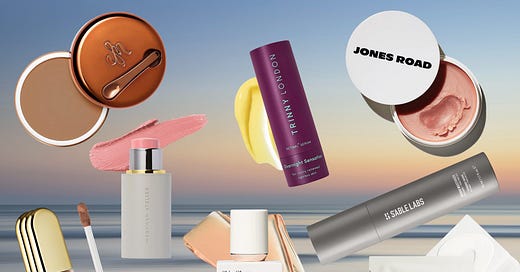

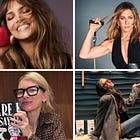
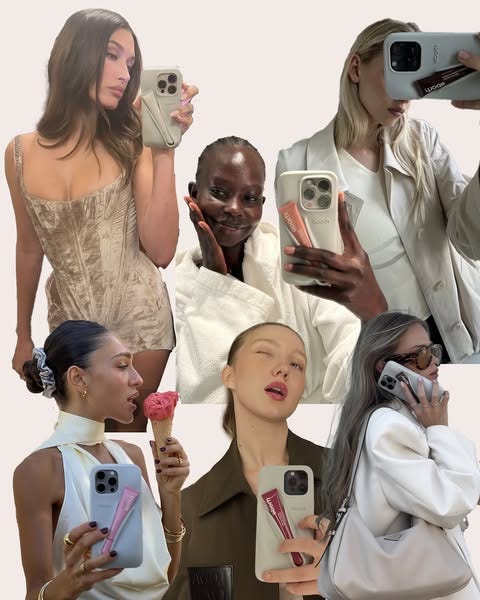
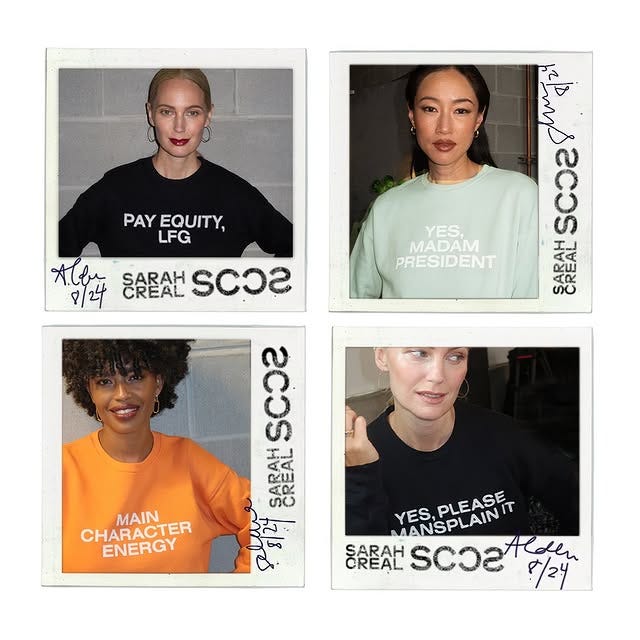







Should I get the Jones Road Miracle Balm?! I’m intrigued
I love Rose Marie Swift (RMS is her brand) because she puts HER face out there. I don’t have many of her projects - just two lipsticks which I like.